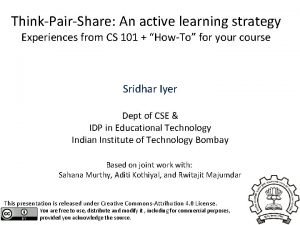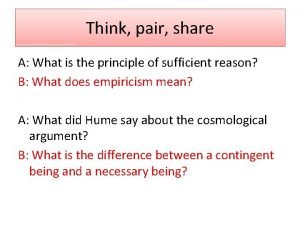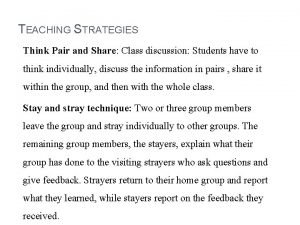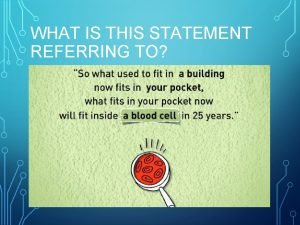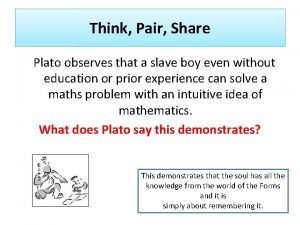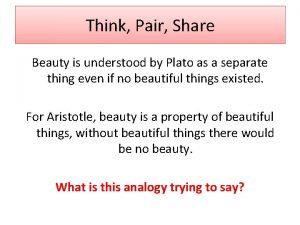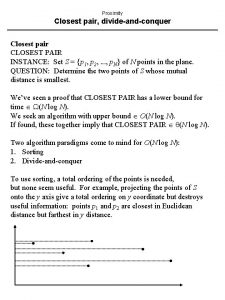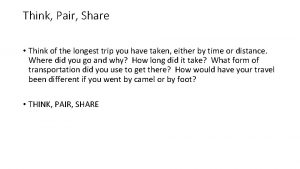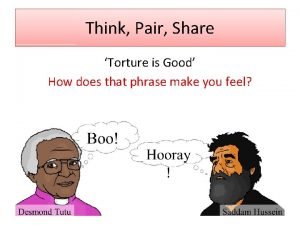Think Pair Share A What does Plato say











- Slides: 11

Think, Pair, Share A: What does Plato say about reality? B: Explain the analogy Plato uses to explain reality. A: What is a form? B: What is a particular and how do we recognise them?

Plato’s concept of the Soul

Learning Outcomes • To be able to explain Plato’s dualistic view of human beings. • To be able to evaluate distinctions between body and soul as expressed in the thinking of Plato.

Plato’s Dualism • The body is the physical component of each person, trapped in a constant state of flux. • The mind possesses the ability and will to achieve an awareness of the realm of forms. Dualism refers to Plato’s belief that the body and mind exist separately and are independent of each other.

Make a table summarising the differences between the body and the mind. Body Stretch yourself task: Do you think there is a difference between the body and the mind? Answer in your notes. Mind

The Conflict The body and mind are often in opposition. The mind wants to gain real knowledge of the true forms. The body is interested in pleasures and needs – it “takes away from us the power of thinking at all. ” This way of thinking is reflected in the way we speak of our bodies. E. g. If we say: ‘I have a cat, ’ we mean something different than ‘I am a cat. ’ ‘I have a cat, ’ means I am not a cat, separate/distinct form a cat. We say: ‘I have a body’ not ‘I am a body. ’ This suggests that the real person is distinct from the body it inhibits.

Parts of the Soul Plato argued that the soul is divided into three parts: reason, emotion/spirited and desire/appetitive. The rational part desires truth… The spirited part desires honour… The appetitive part desires pleasure…

Plato’s Soul Research and create a diagram of Plato’s Charioteer analogy. You must label the diagram and add more detail about each part of the soul. Stretch yourself task: Research and find out what makes a person ‘good’ according to Plato.

Plato’s Phaedo Read Plato’s Phaedo. What does Plato say about: 1. The soul: past, present and future. 2. The affects of an impure existence, driven by physical desire, on the soul. 3. The affects of philosophy on the soul (‘lovers of learning’). 4. How would this link to the analogy of the cave and the world of the forms? Stretch yourself: In Plato’s Republic, he introduces the Myth of Er. What is the story and what is it trying to say?

Plato’s Dualism… In your words how would you explain Plato’s views on the soul in an essay? Write a A 01 paragraph.

How would you improve it? Read your partner’s paragraph and give it two stars and a wish. Finished? Act on your partner’s feedback!


